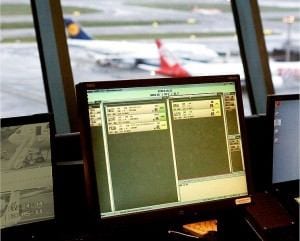The Travel Detective
Travel Detective Blog: What We Learned from the Sequester
Were you surprised at how fast Congress acted to pass a bill allowing the FAA to reallocate funds to end the air-traffic controller sequester and avert the closure of towers? Peter wasn’t. Find out why in his latest Travel Detective® blog, and learn the real lesson the airlines should take from this experience.
The sequester turnaround proved how powerful travel and transportation are in our lives. The economic impact is so strong that it transcends politics.
Don’t let our elected officials spin it the wrong way and confuse you; some even issued press releases that applauded their vote for “air safety” or for not delaying vacationers. In the end, it got down to a numbers game. Not with the federal budget budget, not with air safety or folks wanting to go on vacation, but with economic impact and basic scheduling.
It was also a game of chicken in which no one wanted to blink. Reducing the number of controllers (or their hours) simply meant that fewer flights could be handled. It wasn’t a safety issue, because it was fewer flights that could be handled IN THE AIR. It was economic impact, as in the number of revenue flights that could actually operate anywhere near schedule.
It then fell to the airlines to do triage on their schedule–which “low-yield” flights could they cancel to preserve the more lucrative flights on the schedule. Here’s the interesting part: No airline wanted to preemptively cancel any flights, because each felt it would put them in a competitive disadvantage.
Result: Nothing got taken off the schedule. Instead, planes were held one hour, 90 minutes, two hours at the gate and THEN canceled, pissing even more people off. While the airlines had cancellation plans in place, they never really exercised any of them.
Everyone waited (and they didn’t have to wait long) for the inevitable — which was the immediate result, as I predicted a month ago on CBS This Morning, bipartisan anger across the board. The short-term fix is to take money in the airport improvement budget and move it over to pay controllers. That money then is exhausted in September (when the high summer travel season, coincidentally, is over) and then we’re back to the bigger issue of budgets and work hours.
For the moment, the controllers will be back to a full schedule, but one of the long-term issues is how airlines are allowed to schedule their flights. In good weather, a runway at a major airport can handle roughly 23 takeoffs per hour (given proper time separation). But the airlines are allowed to schedule 34 flights at 8 am or 5 pm.
It’s unrealistic, wasteful (of time and fuel consumption) and doesn’t solve any problems. Perhaps the real wake-up call here, for both the airlines and the U.S. Department of Transportation, is how the airlines schedule their flights and whether, either on their own, or by rule-making by the DOT, airlines begin to schedule them more realistically, based on the operational limits of each airport, and not by trying to be artificially competitive on schedule.
When your flight is now late and there are no weather issues, or budget issues, or staff issues, you can remember reading it here: The airlines are still allowed to schedule flights knowing from the start it is mathematically and logistically impossible to keep that schedule.
In order for this practice to change, the Department of Transportation need to arbitrarily impose a scheduling lottery — for instance, American Airlines gets 8:03 am and United 8:07, Delta 8:11am and so on. Until, then the delusional official scheduling will continue and flights will continue to be late.
Follow along with the sequester saga, with our recent reports:
- Are the Sequester Delays Over for Good?
- The Flight Delays of the Sequester Begin
- How the Sequester Will Impact Travel as FAA Delays Cuts
- Will pilots be overburdened if 149 towers are shut down?
By Peter Greenberg for PeterGreenberg.com













